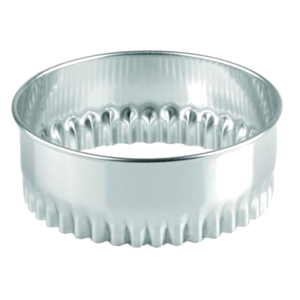Pastry Cutter: Difference between revisions
From DT Online
(Created article) |
mNo edit summary |
||
| Line 1: | Line 1: | ||
[[File:BiscuitCutter.png|300px|right]] | [[File:BiscuitCutter.png|300px|right]] | ||
__TOC__ | __TOC__ | ||
=====Description===== | |||
[https://en.wikipedia.org/wiki/Cookie_cutter '''Biscuit Cutters'''] ''(aka '''Biscuit Cutters''' or '''Cookie Cutters''')'' are shapes commonly made from [https://en.wikipedia.org/wiki/Tinning '''Tinplate'''], [https://en.wikipedia.org/wiki/Stainless_steel '''Stainless Steel'''] or [https://en.wikipedia.org/wiki/Plastic '''Plastics'''] which are pushed through soft dough to produce cut-outs in the shape of the cutter's outline. | |||
=====Uses===== | =====Uses===== | ||
Revision as of 09:52, 14 May 2016
Description
Biscuit Cutters (aka Biscuit Cutters or Cookie Cutters) are shapes commonly made from Tinplate, Stainless Steel or Plastics which are pushed through soft dough to produce cut-outs in the shape of the cutter's outline.
Uses
Cutters are available in a variety of geometric and natural (i.e. animal and plants form) shapes. They are pushed by hand through pastry dough to produce the required biscuit or pastry shape. They are therefore a good example of Stamping or Blanking because it is the piece cut out which is needed.
DT Online Buyers' Guide
- Metal cutters may have quite sharp edges so choose Plastics for young children to use.






